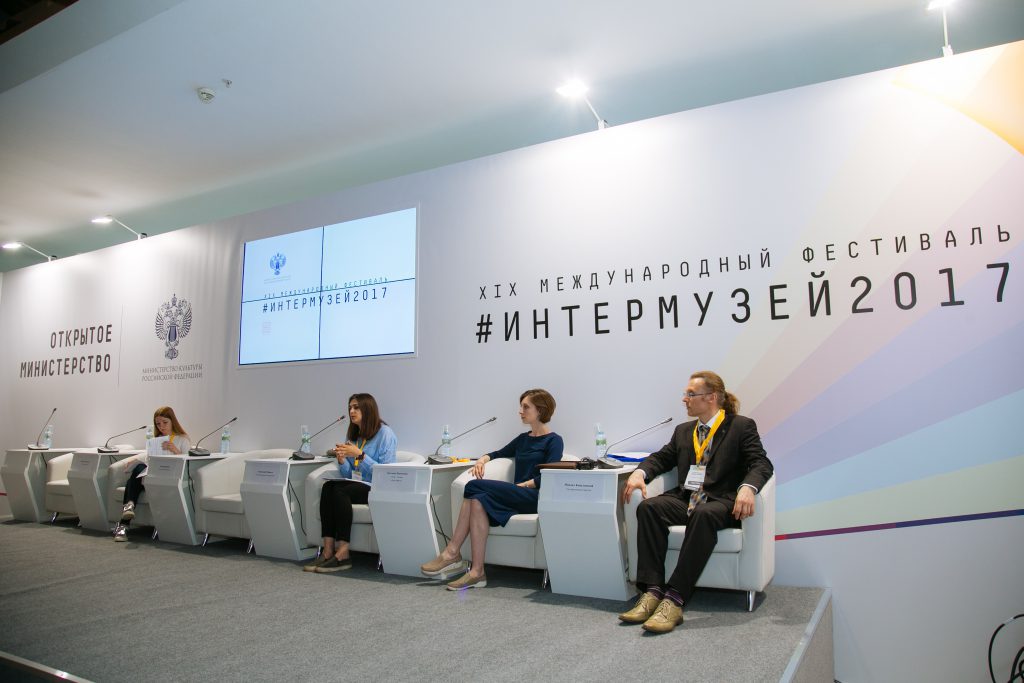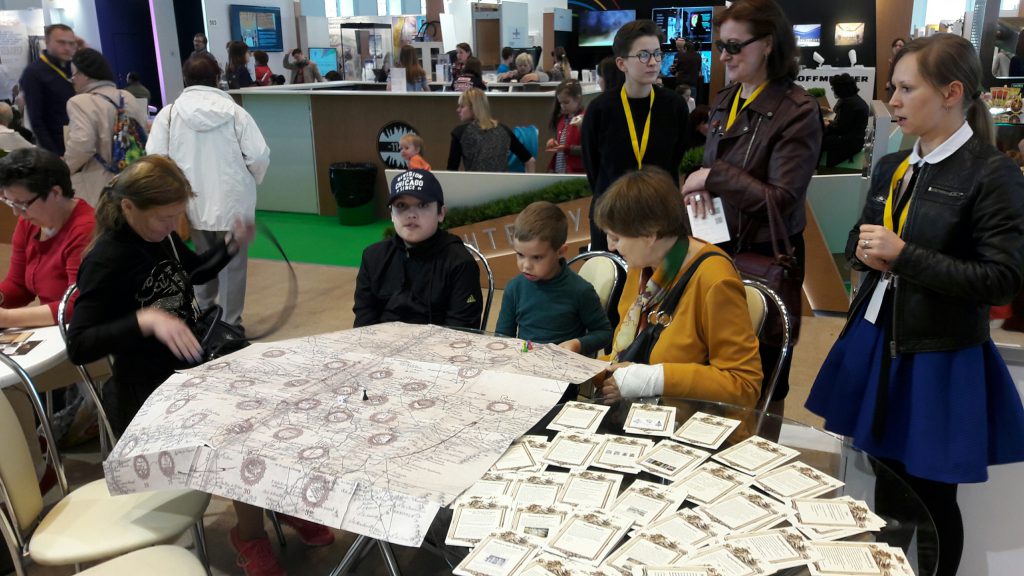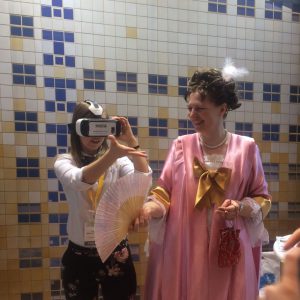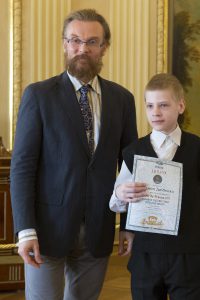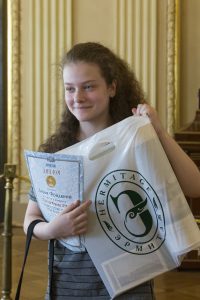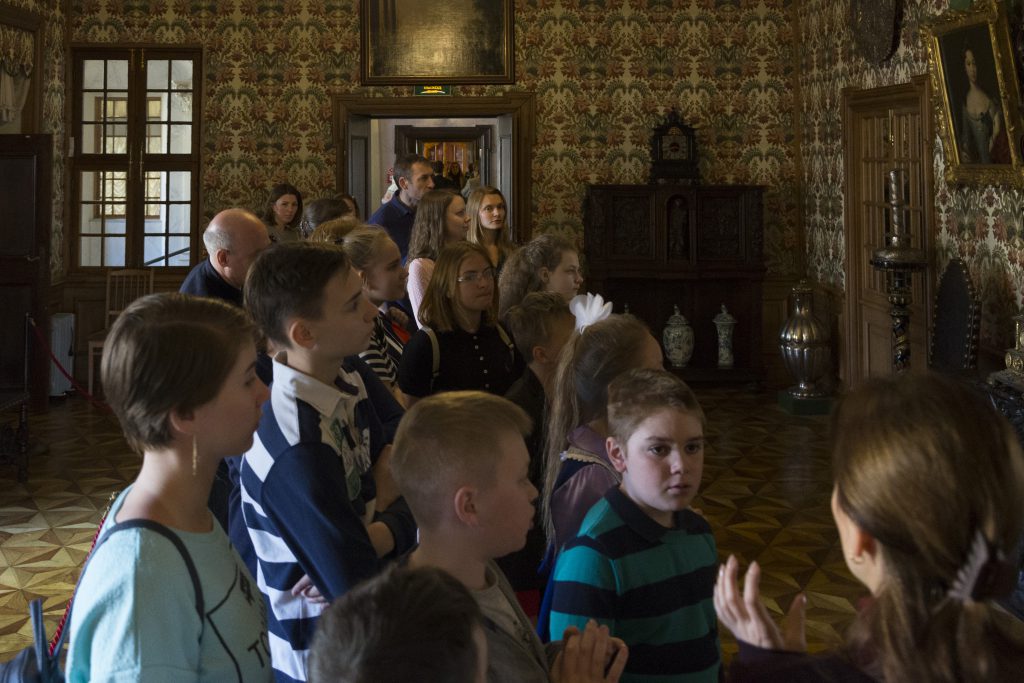«We do not simply live in the environment of cultural heritage, we are responsible for it»
— Mikhail Kozhukhovsky, October 2016.

The Days of the Hermitage have started in the Ekaterinburg Museum of Fine Art, in the framework of which the most interesting events have been planned. One of these events was a meeting with the leader of the Hermitage’s volunteer service, Mikhail Kozhukhovsky. In light of the establishment of the «Hermitage – Urals» project we could not miss the opportunity to talk to Mikhail about the methods for opening up the creative potential of volunteers and the important mission of this charitable movement in the modern world.
— Mikhail Yurevich, have you managed to get to know Ekaterinburg?
— It is my first visit here, so I only started to get acquainted with the cultural traditions a couple of days ago. We contacted representatives of public organisations and museums which are interested in developing a volunteer service. I hope all of this will help us with the plan for organising volunteering, and help us to understand the tasks which will arise before those who will develop this activity in the cultural sphere.
Unfortunately, I am not well acquainted with the volunteer movement in the Urals but I am looking forward to learning more about it. I cannot say that one single concept of the collaboration has already been formed but it is very important and good that this has started. I have good experience in organising the work of the volunteer service at the State Hermitage but I understand that there certain traditions have already developed concerning attracting volunteers, its own behavioural stereotypes, its own methodology of involvement, a concept which differs from all those other variants of concepts for attracting volunteers to the cultural sphere. We are unique in this sense. But our system was created thanks to the fact that we are located in a unique city and in a unique museum – the Hermitage, which is famous throughout the whole world and is a focal point of many, many cultural traditions. But here, in Ekaterinburg, I expect that they will help me to understand by what the young people of this city live (the lives/way of life of young people in this city), what the new generation breathes and what will help it to come together for the creation of (to create)new, interesting projects.
— How is the organization of the Hermitage’s volunteer service unique?
— At the Hermitage, the experience of long-term museum employees and volunteers plays a huge role. Alongside their professional activities, they happily take part in the development of volunteer projects and can take themselves in a completely new direction. We in turn cannot get by without the help of specialists. For example, they help us to create costumes. For the project «Palmyra: Breathing life!» the curator of sculptures helped us to make costumes reminiscent of the third century AD. Without these numerous specialists working in areas such as educational projects or the study of the ancient world and the East; the volunteers would have had tied hands. We simply would not have been able to realize such a challenging project. When one thinks of the Hermitage, then any fantastical job must be based on serious academic research. Fortunately, this is precisely how we work. This allows for the discovery and combination of the numerous talents as well as the enthusiasm of the employees. Thanks to this combination, wonderful projects are being created. And, actually, I can say that we are one of the most creative structures in State Hermitage: a riot of ideas, completely new formats of collaboration with departments. The search for something new allows us to realise fantastic activities.
Another unique principle of ours is training the volunteers to feel a sense of responsibility for the preservation of cultural heritage. Volunteers begin their activities around the Hermitage armed with a clear understanding of this important task. We do not want them in any case to think that by coming to the Hermitage, they are there simply to undertake some kind of basic task. They do not simply work for the volunteer service, but also for the Hermitage Museum itself – the best museum, the world’s heritage – this needs to be felt . Naturally it’s very difficult to be aware of this responsibility? But you have to understand that any idea, any project created by the volunteers fulfils this fundamental mission.
The volunteers working with these global and honourable initiatives perform a wide range of tasks – from collecting rubbish to unpacking boxes and meeting guests. Even though some of these tasks are not particularly creative, thanks to their understanding of the overall mission, they are always prepared to overcome any challenges or give up their time to fill-in for someone at a moment’s notice. Purely for the sake of the high mission and global idea, it is important to establish similar services all over the world.
When it comes to the individual and the aims of the service, volunteering is a constant process of working on oneself. Despite the fact that our volunteer service has been running for thirteen years, we continue to better ourselves and make improvements. These comments may sound trivial but we are really trying to answer the question of why young people today need cultural heritage. In fact, we have an entire project aimed at young people to help them understand the role they can play in protecting cultural heritage. There is a constant introduction to the idea that we do not simply live in the environment of cultural heritage, but that we are responsible for it. We mustn’t be indifferent to it, regardless of what may be happening in the world in relation to it. It is not possible to say that there is only one importance just because it is directly linked to my work, and that other things are not so important because they are not – we simply cannot.
When we conceived the project dedicated to the terrible events of Palmyra, we thought up the name «Palmyra: Breathing life!» This defined what we wanted to achieve. We want every participant to be directly involved in the “breathing” of this life, and to feel the reconstruction of Palmyra and how it became dear. Hence the contents: a collapsible interactive layout of the Temple of Bel as well as a huge puzzle map of Palmyra which can be collected and rebuilt into the city. We must not forget, and should not allow (or allow) this culture to be destroyed. If we keep this in mind, we will begin to take good care of what is around us.
Naturally, many questions arose as we thought about this project. Journalists would ask why we are spending our time on Palmyra when there are so many other problems around! Yet, if we allow ourselves to pass this off as unimportant or meaningless, then we cannot truly appreciate the value of what is close to us. This is the principle upon which our volunteer service is based. We are constantly trying to abide by this principle: to better understand ourselves and the role of museums in society. To me it seems that with this noble mission we can unite volunteers of different spheres from Yekaterinburg to enable us to undergo many interesting projects. This is the most important bonus and the main motivation – when you realise the responsibility you have, you will do the job that someone else thinks is small, unimportant or routine, at the appropriate level.
— You mentioned that in the Hermitage volunteer service there is a unique system to attract people, could you explain that more in detail?
— We are lucky to have many people of different nationalities and lots of students from different countries who are attracted to our work. We have established good links with universities where foreign students go to study. There are many who are immediately attracted and ready to spend time on our projects. It is very important for us to provide a different experience, as through this we can create something new.
It is very important to us that volunteers realise their own project. This is the main motive for volunteer activities. During the time of a volunteers work, they must participate in a project with a team of associates. Therefore, on the very first day the volunteer is given the task of implementing his own project. This involves thoroughly exploring all areas of work and trying to find interesting ideas they could offer, both as a part of our service and beyond. The project should primarily be related to the development of museum business, awareness programs, involvement in volunteering, and collaborations with educational programs and universities. Usually these projects offer a whole new perspective, which allows them to better understand themselves and to build and offer completely new ideas.
The responsibility laid upon the volunteer from day one allows them to explore, say something new, and present a new idea. It would be great to create something similar here, based upon the cultural experience of Ekaterinburg. I think, that within this there is a new method for uncovering the creativity of the younger (but not the only!) generation.
— Were you yourself a volunteer?
— I’m a life-long volunteer! It is my mission. I always tell volunteers, leaving the walls of the Hermitage museum, you should understand that you no longer have the right to walk past the mistaken tourist or lost foreigner. No matter who you are, modest or shy, you don’t have the right to pass them by. Even if you don’t know the answer, approach them and try to help. From the first day volunteers learn to help. Obviously, they don’t have the knowledge of those who have worked here for a long time; however you cannot answer a visitor’s question with «I don’t know, I only just started here.» You must go with the visitor and find the answer. Tell them, we’ll figure it out, and all will be well.
This setting becomes the core of a person for a lifetime. And typically, the people that come to us stay in our service. This is simply because that kind of experience doesn’t go unnoticed. It is a very important principle to learn. It may sound like a lot to expect, but unfortunately if we do not set the bar high we will not be able to adjust to the idea of perfectionism and idealism. As a result, we will not succeed in nurturing an honest, decent citizen, for which homeland small and large, history, culture, and our land will make a difference.
— Does a volunteer in the sphere of culture differ from a volunteer, let’s say, of sports or ecology?
— In my opinion, every volunteer should have a higher objective. We are very friendly with all the volunteer organizations in St. Petersburg but we also understand that the working conditions in our museum are incomparable to some of the hardships other organizations bring upon themselves, which in turn create a stressful environment for the volunteers. So we always try to be understanding, respectful and ready to participate in joint promotions and events. The Hermitage volunteers definitely take part in events throughout the city, sporting activities, and are willing to share their experiences about this. Thus the Hermitage is part of a larger entity, built upon the shared understanding that we are all working towards a common goal.
The main difference can likely be found in the principle I mentioned earlier- the special relationship with cultural heritage and an awareness of a higher mission. In addition to this, we do not split volunteers into fields of activity – everyone needs to be willing and able to do any kind of work. The strengths, knowledge and capabilities of each person are obviously indispensable when working on a project, but one must be ready at any moment to break away from creative tasks and come together to (for example) unpack boxes, pick up trash, to help people with disabilities or to unload a truck full of toys. We love it: a common cause unites us and makes us friendlier with one another.
— Why is the volunteer movement gaining such momentum these days? Why are volunteers needed in society?
— I am very glad that the government finally realized the importance and necessity of the educational value of volunteering for young people. In the past we had the Komsomol, through which many good things were done both voluntarily and involuntarily. As a result the educational effect of such work has not always been achieved. It is great that there are such opportunities available to those growing up in our society, but on the basis of selflessness that underpins volunteering. It provides us with the opportunity to combine efforts of amateurs and professionals as well as the chance to work with experienced people and learn about life from the older generation, rather than from books or the media.
There are no alternatives to this: the sense of unity and the responsibility for another person, an appreciation for the value of human life, and the importance of history and traditions. All of these incorporate the natural human desire for love. It is necessary to support this initiative which exists in every person. We have a tendency to isolate ourselves in our own individualism and try to solve personal problems. As a result we really suffer from the fact that we don’t hear the people who struggle to express themselves. It’s great when there are systems in place that allow us to find the embodiment of all that is kind and good within us, our neighbours and our friends; and to find the kindest and best way of applying it.
Interview by Daria Mitchurina, October 2016.




